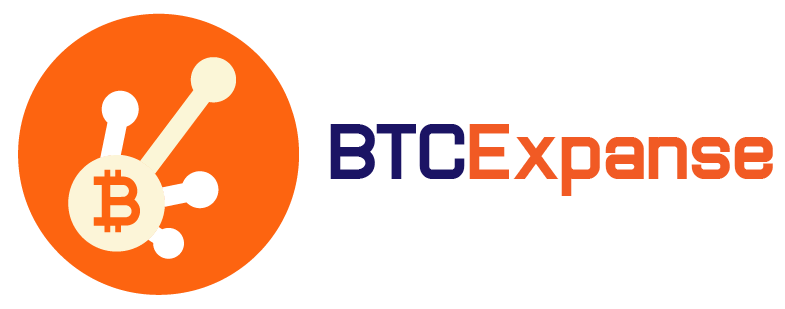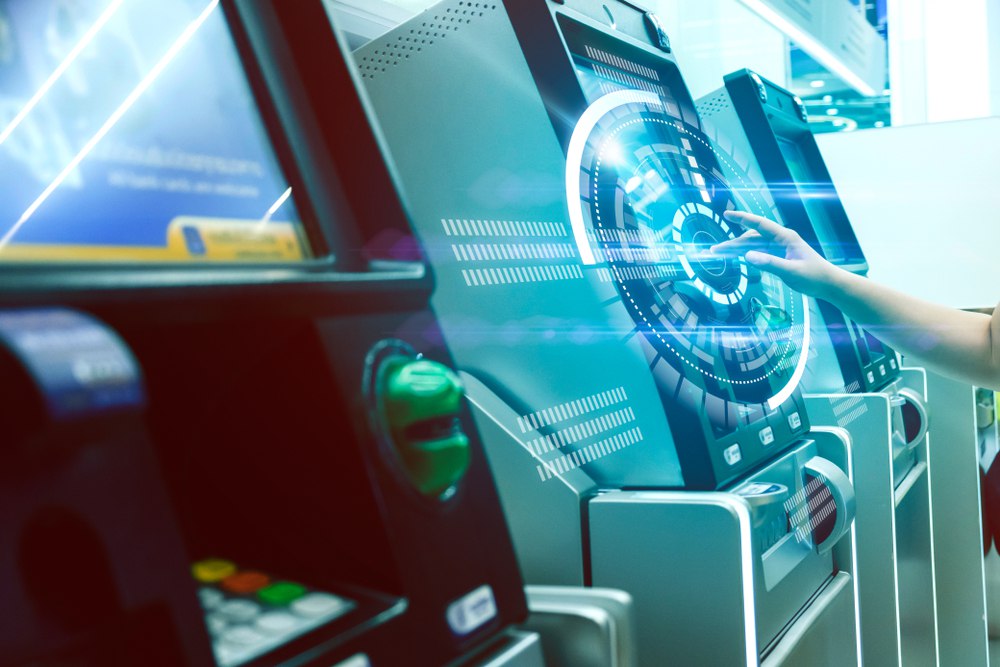Bitcoin ATMs (Automated Teller Machines) are also termed BTMs (Bitcoin Teller Machines). These machines are useful when a user wants to avoid using the traditional method of cashing out their Bitcoin by selling it against a fiat currency.
Because of the increased trust of people in Bitcoin and other cryptocurrencies around the globe, the use and demand of Bitcoin ATMs have also increased exponentially in recent years.
In addition to Bitcoin ATMs, other cryptocurrencies like Ethereum, Dash, and Bitcoin Cash have now created their cryptocurrency ATMs as well.
If you have never used a Bitcoin ATM and know nothing about it, you have a lot to learn in this guide. There is a lot of useful stuff about Bitcoin ATMs in this guide. For example, we will tell you how you can easily use these ATMs and how you can buy and sell Bitcoin by using them.
After reading this guide, you will be able to deposit money into a Bitcoin ATM and use the ATM effectively to directly cash out your Bitcoin in the form of a fiat currency. You’ll also be able to calculate the related costs before even going into the process.
Introduction to Bitcoin ATMs
A Bitcoin ATM looks and works just like normal ATMs you find everywhere. It is just like any other ATM. However, the key feature of Bitcoin ATMs, which sets them apart from regular ATMs, is that they allow the user to buy Bitcoin by using a fiat currency in cash or debit and sell their Bitcoin in exchange for fiat currency as well. While the Bitcoin buying feature is present in every BTM, only a few support Bitcoin selling.
A Bitcoin ATM is connected to a secure bitcoin wallet by using the internet instead of being connected to a bank. The Bitcoin wallet connected to the ATM is used to deposit or withdraw Bitcoin according to the need of every user.
Most of the time, Bitcoin ATMs look exactly like regular ATMs because they are regular ATMs with their software customized to cater to the needs of Bitcoin buyers and sellers.
A Brief History of Bitcoin ATMs
The first ever cryptocurrency-enabled ATM was implemented in a coffee shop in Canada in 2013. The Robocoin machine was only able to stay operational until 2015 when operating errors put a hard stop on it.
Although there were lots of issues and complications with this ATM, it is still regarded as the first ever ATM to give the concept of BTMs.
The trend was continued by Europe when a similar ATM was launched shortly after in Slovakia. It started working in December 2013.
The US quickly followed and had its first Bitcoin ATM installed in February 2014. This machine was a failure and was pulled out after only one month of use.
Just like Bitcoin itself, Bitcoin ATMs have also suffered from many regulations and functionality issues ever since their invention. Laws were made to force Bitcoin ATMs to start working just like regular ATMs. This was when Bitcoin ATMs were allowed to work easily everywhere around the globe.
The regulations covering Bitcoin ATMs include limits on maximum transactions, both deposits and withdrawals, made by a single person in one day. For example, the US requires every Bitcoin ATM owner to comply with Anti Money Laundering laws, follow BSA, and get registered by FinCEN to be able to operate even a single Bitcoin ATM in the country.
Whenever a user makes a transaction by using the Bitcoin ATM, the machine might require their mobile number to send them a one-time code to verify the transaction. Moreover, the machine might require you to present your identification documents before the completion of a transaction.
Another great feature of Bitcoin ATMs is that they do not offer any anonymity like they once did. One of the major reasons behind this is that Bitcoin ATMs require their users to verify their identity before making any transaction, and this beats the purpose of investing in Bitcoin for many people.
Around 30,000 Bitcoin ATMs are working around the globe right now, and most of them are located in the US. According to a careful estimate, North America currently has 90% of all Bitcoin ATMs in existence.
Around 42% of the Bitcoin ATM manufacturing industry is held by two companies, namely General Bytes and Genesis Coin.
You’ll see, most of the BTMs are installed in places like transit stations, coffee shops, and at airports. Bitcoin ATM providers require business owners to enter into a contract with them if a business owner is interested in getting a Bitcoin ATM installed at their place. After the contract is signed by both parties, BTM can then be installed in the required spot.
Working Mechanism of Bitcoin ATMs
Using a crypto exchange can turn out to be an overwhelming experience for many. That’s why a Bitcoin ATM can be used by those people who don’t want to interact with a cryptocurrency exchange and want to deposit/ withdraw their Bitcoin in a conventional-looking way.
Users are mostly required to create an account with the Bitcoin ATM provider before they can use the machine to manage their funds. There are two different types of Bitcoin ATMs.
Unidirectional Bitcoin ATMs support only one function. This type of machine either only supports buying or selling without any support for the other option, hence the name.
Bi-Directional Bitcoin ATMs, as their name suggests, support two-way transactions. Users can buy and sell Bitcoin through these machines without encountering any difficulties.
Every Bitcoin ATM requires a consistent and strong connection with the internet and their Bitcoin wallet at all times. That is because they need the latest Bitcoin to fiat currency conversion rate to successfully convert the cryptocurrency into regular money.
Advanced BTMs are now using public keys to convert a specific amount of Bitcoin into cash. However, older BTMs continue relying on paper receipts. Moreover, Bitcoin ATMs require their users to verify their identity, especially in the case of larger transactions.
While traditional ATMs only have a backend system connected to them for recording purposes, BTMs use blockchain for transparent and fair transaction recording. Once the fiat deposit is made, BTM shows a QR code to the user, which they can scan to receive Bitcoin in their wallet. After the transaction is done, it is added to the blockchain and is secured forever.
These machines aren’t linked to any banks or conventional financial institutions. But they have to follow all the rules that normal banks and their ATMs have to follow.
Due to strict regulations, BTMs give you a minimum and maximum limit for every transaction. As we have already mentioned above, BTM manufacturers and operators are required to adhere to strict regulations when operating in the US. Moreover, additional verification might be needed by BTMs, especially when users try to make big transactions.
How to Use Bitcoin ATMs
If you want to deposit a fiat currency to buy Bitcoin in exchange for it, here are some simple steps you can follow.
Due to the regulations applied to them, BTMs require users to verify their identity before they can proceed with a transaction. To verify your identity, the BTM will require your mobile number. Bitcoin ATMs are fully anonymous, just like Bitcoin itself.
However, they now have to comply with regulations and anti-money laundering laws to be able to operate in physical places. That’s part of the reason why they need to complete KYC before doing any transactions for their users.
BTMs are required by law to verify the identity of their users through one method or the other. This might include sending an OTP on their mobile number or requiring them to show their government-issued ids, like their ID card or driving license.
Once you type your mobile number into the BTM, your identity verification process will start. The BTM will send you a verification code on your mobile phone, which you can put in the machine to verify your identity.
You are required to type the exact code that you receive on your mobile number into the BTM so that fake mobile numbers may be easily prevented by the machine.
If you are buying or selling Bitcoin using an ATM, the odds are that you already have a cryptocurrency wallet. After all, you will need a cryptocurrency wallet to send or receive Bitcoin, even when using a BTM.
You will need to input your Bitcoin address into the Bitcoin ATM before starting the transaction process. This is the address the machine will use to send the Bitcoin if you are buying it from the ATM.
However, if you do not already have a Bitcoin address to receive the cryptocurrency, you can easily create one yourself. All you have to do is download a mobile application on the go, put some basic information into it, and you will be easily verified and registered.
The QR codes generated by the application and the ATM are the most important parts of this process. You can use your wallet to create a QR code containing your Bitcoin wallet address and then scan that QR code under the BTM to let the machine know where to send the cryptocurrency.
Also, since not every wallet is supported by every BTM, you should make sure that your wallet is supported by the machine you are using before making the transaction.
After the initial verification and inputting of your wallet address into the machine, you are required to input the amount of fiat currency you want to spend in exchange for Bitcoin. You can count your money and put it into the money receiver on the BTM for it to be processed by the machine.
After counting your money, the machine will tell you how much Bitcoin you can buy.
Whenever you are done checking the amount of money you deposited into the machine and are satisfied with the exchange rate being provided by it, you can press the “Buy” button to confirm the transaction. This will prompt the machine to send the same Bitcoin amount into your wallet that you provided earlier with the help of the QR code scanning feature on the machine.
Bitcoin ATMs are usually slow in transaction speeds. Therefore, you should expect a delay of around 10 minutes to an hour before the Bitcoin you bought starts reflecting in your wallet. There are lots of network confirmations needed before the amount can be released upon successful confirmation of the money deposit and the exchange rate provided.
So, after making the transaction, you should rest assured that you will soon receive the Bitcoin in your wallet and should never worry about the amount getting stolen.
Buying and Selling Bitcoin via Crypto ATMs
While some machines only support buying Bitcoin by using your fiat currency, others allow both deposit and withdrawal of Bitcoin.
The whole process of buying and selling Bitcoin at a BTM is just like using a regular ATM to make transactions.
If you want to sell your Bitcoin in exchange for fiat currency at a BTM, here are the steps you’ll need to take.
At a BTM which supports selling Bitcoin, choose the “Sell” option at the start. Generate a QR code on your cryptocurrency wallet or exchange app, and scan it with BTM. The machine might also allow you to enter the whole wallet address manually.
To pass through the KYC process, you’ll need to provide the machine with the means to identify you. The machine might ask for your mobile number, your ID/driver’s license, or both. Some modern BTMs also accept fingerprints. Verifying your identity is a must, especially for larger transactions.
After you specify the amount of BTC you want to sell, the machine will provide you with a QR code which you can scan with your crypto wallet to get an address where you’ll be required to send the specified amount of BTC.
Once the transaction is made, you will have to press the confirmation button, and the machine will wait for the BTC to be transferred to the target wallet before labeling the transaction as complete. Some of the newer machines can process the transaction and give you the money almost instantly.
In the end, you’ll be provided with a receipt. You must keep the receipt safe for later use whenever applicable.
Usually, buying Bitcoin from BTMs is easy, while selling your Bitcoin to a BTM for fiat currency is often complex, and the steps vary from one BTM manufacturer to the other.
Still, using these BTMs to send and receive Bitcoin in your cryptocurrency wallet is way easier than using a cryptocurrency exchange or wallet. All you have to do is stay focused and follow the on-screen steps one by one for fast transactions.
Pros and Cons of Bitcoin ATMs
Just like every other feature related to the cryptocurrency market, Bitcoin ATMs have their pros and cons. Let’s take a quick look at some of the most prominent pros and cons of using these machines.
Pros
It is one of the most reliable ways to buy and sell Bitcoin on the go. You do not need to involve any bank or use a physical debit or credit card to complete the transaction.
Some countries do not yet require Bitcoin ATMs to complete the KYC process. In those countries, you can easily buy or sell your Bitcoin while being completely anonymous, just like in the case of cryptocurrency exchanges and wallets.
These machines provide easy access to conventional banking solutions like ATMs to people who do not want to keep their money in banks.
In countries with very limited means to purchase cryptocurrency, BTMs can be used to provide easy access to buying and selling Bitcoin and any other cryptocurrency.
Since there are thousands of BTMs currently operating around the globe, users can conveniently buy and sell Bitcoins within the same network even while traveling to different countries.
Cons
One of the biggest cons of using BTMs for Bitcoin transactions is their high fees. In many cases, the fees per Bitcoin-related transaction can range anywhere between 7% and 12%.
Due to the minimum and maximum transaction limits applied to these machines because of regulations, they are not suitable for many cryptocurrency buyers and sellers. For example, many BTMs have transaction limits between $1,000 and $10,000. This excludes many small buyers/ sellers and many large customers as well.
Due to the strict regulations in countries like the US, users are required to go through the KYC process. This means their Bitcoin transactions are not anonymous anymore.
Conclusion
When the first ever Bitcoin ATM was introduced in 2013, the value of Bitcoin was only $200. Since then, both the value of Bitcoin and the popularity of BTMs have increased considerably on a global scale.
Despite the recent price fluctuations, Bitcoin is still worth thousands of dollars, and this provides investors with a perfect incentive to install BTMs across the globe. This is done to provide Bitcoin investors with the luxury of selling and buying bitcoin directly at BTMs of their choice.
Even though the regulations around the use and installation of BTMs have recently gotten very strict, Bitcoin users around the globe are still appreciating them and using them daily.
However, the major disadvantages of BTMs include height transaction fees and compromised anonymity since these machines require their user to go through the KYC process before transactions can be processed.































